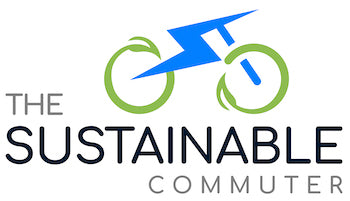Charging Electric Vehicles: Understanding Times and Factors
Share
Introduction
Electric vehicles (EVs) have gained popularity in recent years, as more people recognize the environmental and cost-saving benefits of driving an electric car. However, one of the common concerns for potential EV owners is the time it takes to charge their vehicles. Understanding the different types of charging options and the factors that affect charging speed can help EV owners optimize their charging times and ensure a seamless driving experience.
Types of Electric Vehicle Charging
There are three main types of electric vehicle charging: Level 1 charging, Level 2 charging, and DC fast charging.
Level 1 Charging: Level 1 charging is the most basic and slowest form of charging. It involves plugging the vehicle into a standard 120-volt household outlet using the charging cable that comes with the vehicle. Level 1 charging typically provides a charging rate of 2 to 5 miles of range per hour of charging, depending on the vehicle.
Level 2 Charging: Level 2 charging requires a dedicated charging station and a 240-volt power source. This type of charging is faster than Level 1 charging and provides a charging rate of 10 to 30 miles of range per hour, depending on the vehicle and the charging station's power output. Level 2 charging stations can be installed at home or in public locations such as parking lots, shopping centers, and workplaces.
DC Fast Charging: DC fast charging, also known as Level 3 charging, is the fastest charging option available for electric vehicles. It uses a high-powered charging station that provides direct current (DC) to the vehicle's battery, bypassing the vehicle's onboard charger. DC fast charging stations can charge an electric vehicle to 80% capacity in as little as 30 minutes, depending on the vehicle and the charging station's power output. These stations are typically found along major highways and in urban areas.
Factors Affecting Charging Speed
Several factors can affect the charging speed of an electric vehicle. These factors include:
Battery Capacity: The size of the vehicle's battery pack plays a significant role in charging times. Vehicles with larger battery packs will take longer to charge compared to vehicles with smaller battery packs. It is essential to consider the battery capacity when purchasing an electric vehicle, as it will determine the range and charging times.
Charging Infrastructure: The availability and power output of charging stations in an area can influence charging times. Areas with a robust charging infrastructure, including Level 2 and DC fast charging stations, will allow for faster charging times. It is essential for EV owners to research the charging infrastructure in their region to plan their charging routines effectively.
Temperature: Extreme temperatures, both hot and cold, can affect the charging speed of an electric vehicle. Cold temperatures can decrease the efficiency of the battery, leading to slower charging times. On the other hand, high temperatures can cause the battery to heat up, which can also slow down charging. EV owners should be aware of the impact of temperature on charging speed and take measures to mitigate its effects, such as parking in shaded areas or using pre-conditioning features to regulate the battery's temperature.
Vehicle Specifications: Each electric vehicle has different charging capabilities and specifications. Some vehicles may have built-in features that allow for faster charging, such as onboard chargers with higher power outputs or the ability to accept higher charging currents. It is crucial to understand the charging capabilities and limitations of your specific electric vehicle to optimize charging times.
Tips for Optimizing Charging Times
To optimize charging times and ensure a smooth charging experience, consider the following tips:
Utilizing Renewable Energy Sources: Charging an electric vehicle with renewable energy sources, such as solar or wind power, can help reduce the carbon footprint of charging. Installing solar panels at home or using public charging stations powered by renewable energy can make EV charging more sustainable.
Investing in a Robust Charging Infrastructure: If you have the means, consider investing in a Level 2 charging station at home. This will allow for faster charging times and the convenience of charging overnight. Additionally, take advantage of public charging stations in your area, especially those with higher power outputs, to minimize charging times when on the go.
Understanding Vehicle Specifications: Research and understand the charging capabilities and limitations of your specific electric vehicle. This knowledge will help you plan your charging routines effectively and take advantage of the fastest charging options available to you.
Conclusion
Sustainable electric vehicle charging is essential for the widespread adoption of electric vehicles. By understanding the different types of charging options and the factors that affect charging speed, EV owners can optimize their charging times and ensure a seamless driving experience. Investing in renewable energy sources and a robust charging infrastructure, along with understanding vehicle specifications, can help make the transition to electric vehicles even more sustainable.
References:
- Tesla: www.tesla.com
- ChargePoint: www.chargepoint.com
- Nissan: www.nissanusa.com
- BMW: www.bmwusa.com
